
Normandy is a geographical and cultural region in Northwestern Europe, roughly coextensive with the historical Duchy of Normandy.

Falaise is a commune in the Calvados department in the Normandy region in northwestern France.

Robert the Magnificent was the duke of Normandy from 1027 until his death in 1035.

Bayeux is a commune in the Calvados department in Normandy in northwestern France.

The Duchy of Normandy grew out of the 911 Treaty of Saint-Clair-sur-Epte between King Charles III of West Francia and the Viking leader Rollo. The duchy was named for its inhabitants, the Normans.
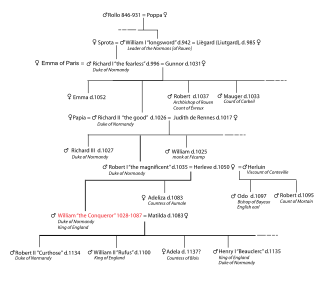
In the Middle Ages, the duke of Normandy was the ruler of the Duchy of Normandy in north-western France. The duchy arose out of a grant of land to the Viking leader Rollo by the French king Charles III in 911. In 924 and again in 933, Normandy was expanded by royal grant. Rollo's male-line descendants continued to rule it until 1135. In 1202 the French king Philip II declared Normandy a forfeited fief and by 1204 his army had conquered it. It remained a French royal province thereafter, still called the Duchy of Normandy, but only occasionally granted to a duke of the royal house as an apanage.
David Bates is a historian of Britain and France during the period from the tenth to the thirteenth centuries. He has written many books and articles during his career, including Normandy before 1066 (1982), Regesta Regum Anglo-Normannorum: The Acta of William I, 1066–1087 (1998), The Normans and Empire (2013), William the Conqueror (2016) in the Yale English Monarchs series and La Tapisserie de Bayeux (2019).

Richard I, also known as Richard the Fearless, was the count of Rouen from 942 to 996. Dudo of Saint-Quentin, whom Richard commissioned to write the "De moribus et actis primorum Normanniae ducum", called him a dux. However, this use of the word may have been in the context of Richard's renowned leadership in war, and not as a reference to a title of nobility. Richard either introduced feudalism into Normandy or he greatly expanded it. By the end of his reign, the most important Norman landholders held their lands in feudal tenure.
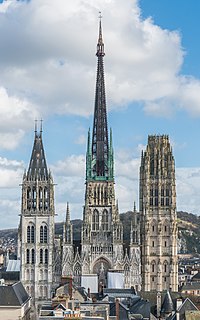
Rouen Cathedral is a Roman Catholic church in Rouen, Normandy, France. It is the see of the Archbishop of Rouen, Primate of Normandy. It is famous for its three towers, each in a different style. The cathedral, built and rebuilt over a period of more than eight hundred years, has features from Early Gothic to late Flamboyant and Renaissance architecture. It also has a place in art history as the subject of a series of impressionist paintings by Claude Monet.
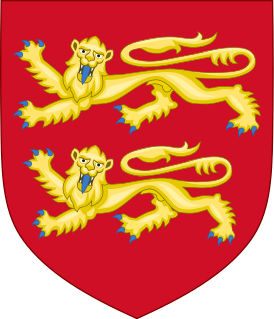
The House of Normandy designates the noble family which originates from the Duchy of Normandy and whose members were counts of Rouen, dukes of Normandy, as well as kings of England following the Norman conquest of England. It lasted until the House of Plantagenet came to power in 1154. The house emerged from the union between the Viking Rollo and Poppa of Bayeux, a West Frankish noblewoman. William the Conqueror and his heirs down through 1135 were members of this dynasty.
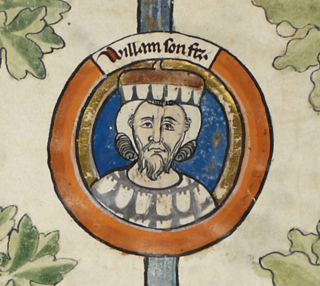
William Longsword was the second ruler of Normandy, from 927 until his assassination in 942.

Normandy was a province in the North-West of France under the Ancien Régime which lasted until the latter part of the 18th century. Initially populated by Celtic tribes in the West and Belgic tribes in the North East, it was conquered in AD 98 by the Romans and integrated into the province of Gallia Lugdunensis by Augustus. In the 4th century, Gratian divided the province into the civitates that constitute the historical borders. After the fall of Rome in the 5th century, the Franks became the dominant ethnic group in the area and built several monasteries. Towards the end of the 8th century, Viking raids devastated the region, prompting the establishment of the Duchy of Normandy in 911. After 150 years of expansion, the borders of Normandy reached relative stability. These old borders roughly correspond to the present borders of Lower Normandy, Upper Normandy and the Channel Islands. Mainland Normandy was integrated into the Kingdom of France in 1204. The region was badly damaged during the Hundred Years War and the Wars of Religion, the Normans having more converts to Protestantism than other peoples of France. In the 20th century, D-Day, the 1944 Allied invasion of Western Europe, started in Normandy. In 1956, mainland Normandy was separated into two regions, Lower Normandy and Upper Normandy, which were reunified in 2016.

The Château de Falaise is a castle from the 12th-13th century, located in the south of the commune of Falaise in the département of Calvados, in the region of Normandy, France. William the Conqueror, the son of Duke Robert of Normandy, was born at an earlier castle on the same site in about 1028. William went on to conquer England and become king, and possession of the castle descended through his heirs until the 13th century, when it was captured by King Philip II of France. Because of his association to the location it is also known as Château Guillaume le Conquérant or William the Conqueror's Castle.

William the Conqueror had men of diverse standing and origins under his command at the Battle of Hastings in 1066. With these and other men he went on in the five succeeding years to conduct the Harrying of the North and complete the Norman conquest of England.

The Congress Column is a monumental column in Brussels, Belgium, commemorating the creation of the Belgian Constitution by the National Congress of 1830–31. Inspired by Trajan's Column in Rome, it was erected between 1850 and 1859, on the initiative of the then-Prime Minister of Belgium, Charles Rogier, according to a design by the architect Joseph Poelaert. At the top of the column is a statue of Belgium's first monarch; King Leopold I, and at its base, the pedestal is surrounded by statues personifying the four freedoms guaranteed under the Constitution. The Belgian Tomb of the Unknown Soldier with an eternal flame lies at its foot.
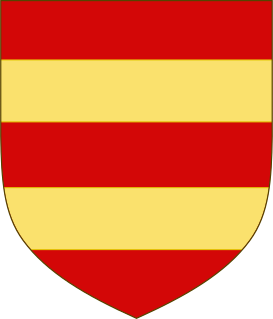
The House of Harcourt is a Norman family, and named after its seigneurie of Harcourt in Normandy. Its mottos were "Gesta verbis praeveniant", "Gesta verbis praevenient", and "Le bon temps viendra ... de France".

Ménil-Hermei is a commune in the Orne department in the Normandy region of north-western France.

The Normans were a population arising in the medieval Duchy of Normandy from the intermingling between Norse Viking settlers and indigenous West Franks and Gallo-Romans. The term is also used to denote emigrants from the duchy who conquered other territories such as England and Sicily. The Norse settlements in West Francia followed a series of raids on the French northern coast mainly from Denmark, although some also sailed from Norway and Sweden. These settlements were finally legitimized when Rollo, a Scandinavian Viking leader, agreed to swear fealty to King Charles III of West Francia following the siege of Chartres in 911. The intermingling in Normandy produced an ethnic and cultural "Norman" identity in the first half of the 10th century, an identity which continued to evolve over the centuries.
Osbern the Steward, known in French as Osbern de Crépon, was the Steward of two Dukes of Normandy and the father of William FitzOsbern, 1st Earl of Hereford, one of William the Conqueror's closest counsellors.

Poppa of Bayeux, was the wife more danico' of the Viking conqueror Rollo. She was the mother of William I Longsword, Gerloc and grandmother of Richard the Fearless, who forged the Duchy of Normandy into a great fief of medieval France. Dudo of Saint-Quentin, in his panegyric of the Norman dukes, describes her as the daughter of a "Count Berengar", the dominant prince of that region, who was captured at Bayeux by Rollo in 885 or 889, shortly after the siege of Paris. This has led to speculation that she was the daughter of Berengar II of Neustria.



























